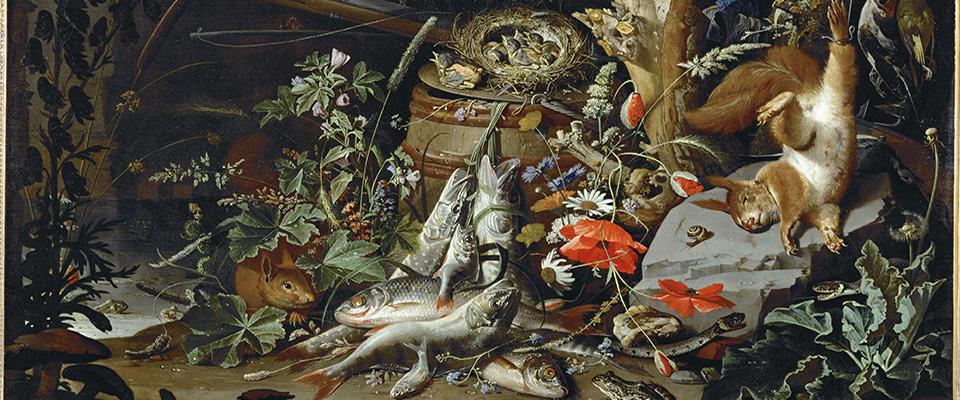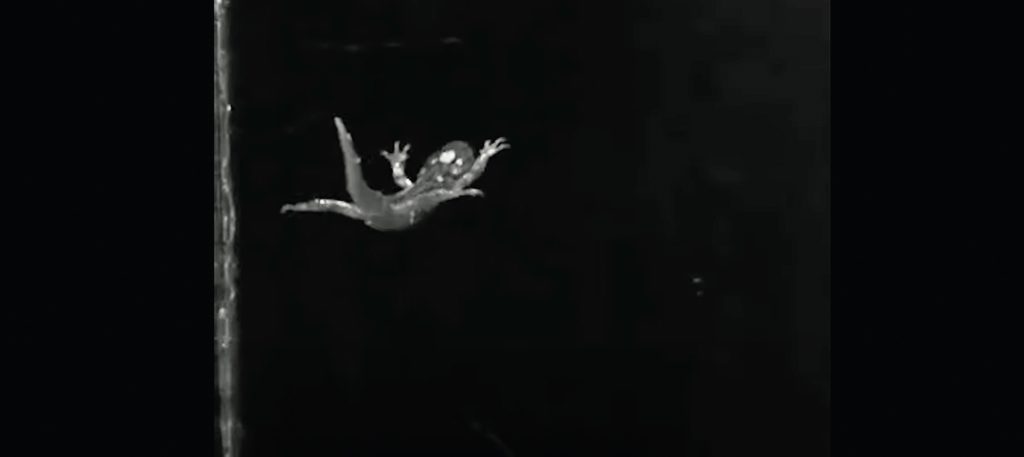Tonight’s dinner could be scampering right in front of you.
The students will soon come back from summer break—and the hungry campus squirrels will be lying in wait…
It’s perfectly sane and reasonable to kill and eat a squirrel.
Really, when you think about it, the question isn’t “why am I out here stalking squirrels in an undisclosed location for an uncountable number of days?” It’s “why aren’t you?” Why, there goes one now….
Squirrels are available, sustainable, tasty and—look! another one!—plentiful. Squirrels breed twice a year, with an average litter size of three. Another squirrel will be along soon.
Surely at this point in the food revolution, you’ve been persuaded to eat dandelion greens, odd berries, wild mushrooms, and maybe even some acorns. “Forage,” we’re told. “Enjoy nature’s bounty.”
You’ve probably also spent some time in the last few years being hectored about and horrified by the fate of factory farm animals. Pigs in crates. Debeaked chickens. Antibiotic-laced diets. Cows eating cows. Practices that, clearly, only a monster could be party to. Yet sometimes it seems that something is missing from your new repast of weeds and virtue, something of substance but without shame, something that could convert all of that forage into meat. You remember meat, don’t you?
Mesdames et messieurs, might I suggest the squirrel? It’s especially frisky today, dancing on the other side of that tree, just out of reach….
What? you say. You mean the sort of squirrels that scamper and dance all over Cal’s woodsy campus, those fluffy little ambassadors of higher learning that will bite you to the bone if you come between them and a trash-can french fry?
There’s actually a tradition of hunting for those critters. Berkeley used to have a squirrel fishing club, part of an early 2000s college craze for landing the rodents by using peanuts attached to strings. It was strictly catch and release, alas.
The large reddish-orange squirrels all over campus are eastern fox squirrels and about as native to Berkeley as an NRA bumper sticker. They were brought to California by white settlers from eastern North America, possibly for sport and food. And, like so many easterners, the fox squirrels have stayed for the weather and pushed out the natives.
At Cal, the squirrels are often used as lab subjects. Doctoral student Mikel Delgado, who runs a squirrel research team, is investigating their cognitive processes. Just how smart are squirrels? Delgado says that, intelligence-wise, all animals have certain problems to face in order to survive, and by that measure all animals are pretty smart—they’re just as smart as they need to be.
Yeah, but squirrels? Really?
“They don’t form pair bonds. They don’t co-raise their young. They don’t form societies. On the other hand, there’s a giant industry in squirrel-proof bird feeders,” Delgado said. “They’re not going to cure cancer, though.”
So if the thought of eating intelligent animals gives you pause, fear not. The squirrel is still fair game.
If you really want free-range meat, hunting may be the way to go. Meat doesn’t get any fresher or freer than when it’s wild. Hunting recommits you to environmental conservation; without wild places, there’s no wild game. These animals are living free in nature until you pluck them out of the first reel of a Disney film with an exsanguinating shot through both lungs or the upper spinal column.
Yes, it’s bloody. Of course it’s bloody. Hunting isn’t meat without guilt; all meat has its portion of guilt. Hunting is guilt with responsibility and gratitude. It means not outsourcing the killing. It means making sure that the animal you eat died as humanely as was within your power. Plus, you know what you’re eating. You know where your meat lived and what it ate. Its stomach contents are right there for you to look at.
Squirrel is traditional, too. Possibly the only food as all-American as apple pie is squirrel pie. There’s a delightful cookbook called Unmentionable Cuisine, published in 1979, that complains about “how whole groups of animals came to be classified in our minds as repugnant, even nauseating, and through such prejudices be eliminated completely from our potential repertoire of foods.” The author then goes on to say that squirrel is “one rodent that is not completely foreign to American cuisine.”
This is severely understating the case. Allow me to introduce you to The Joy of Cooking—not the bowdlerized, low-fat modern edition, nor even the rustic original 1931 edition. I’m talking about the one you know, the one either you or your parents quite possibly have in your kitchen right now. I mean the Joy that tells you how to skin a squirrel. With illustrations. Heck, the 1975 edition even includes advice on opossum, porcupine, raccoon, muskrat, woodchuck, beaver, and armadillo.
Now tell me that the American palate hasn’t constricted, hasn’t cut us off from the flavors of our forebears. Or, as Unmentionable Cuisine would say, behold the “latent versatility of an emancipated American cuisine.”
The Pilgrims ate squirrel. The pioneers ate squirrel, though not if they could get bison. The classics are Brunswick stew and burgoo, both originally substantial, let’s-feed-everybody stews of the hunting season. Unmentionable Cuisine also suggests a Cajun squirrel ravioli, but that’s probably not traditional. A lot of early American cookbooks—a group of books that tend to contain such helpful directions as “season meat” and “cook until done”—treat squirrel as interchangeable with rabbit or (as always) chicken.
I’ve had squirrel before. It’s a deep, rich flavor, like dark-meat turkey meets duck meets pork and then skitters out of sight and leaps into a pine tree, twittering defiance like a Frenchman in a Monty Python movie, the little bastard….
Ahem.
Before setting out to hunt squirrels, I talked to someone who could tell me how to cook them. Hank Shaw, author of Hunt, Gather, Cook: Finding the Forgotten Feast, said they have a dense, nutty flavor. “From a flavor perspective, they’re one of my favorite game animals,” Shaw said. He advises that you stick to stews and braising—nice slow, moist cooking. “Squirrels are extremely tough animals. You can shoot a squirrel with a shotgun at 50 yards and it will laugh at you.”
Shaw said he prefers native western gray squirrels, but he doesn’t hunt them specifically, saying it’s not worth the gas to go up to the Sierras just for squirrel.
“Squirrel hunting in California is not very good,” Shaw warned me. “There are lots of squirrels in California, but not a lot of places to hunt them.” Hunting is subject not just to game regulations, but to state, county, city, and sometimes federal laws. Tree squirrels have a season and require a license, except when they’re considered pests. Ground squirrels are always pests but are also a known reservoir of bubonic plague…. And on and on. By the time you’re hunting squirrel, you’ve often gone far enough and through enough trouble that you might as well be hunting deer or pigs or grouse.
For the California hunter, Shaw recommends ducks.
But I was set on a squirrel.
This squirrel will not be my first. It’ll be my second. Having come to hunting as an adult and having started with deer, I’m doing a lot of this in reverse order. Most hunters probably learned to hunt squirrels when they were kids, before growing out of it and moving on to bigger game.
For a lot of hunters, it’s nostalgic. Or, as T. Edward Nickens puts it in my February 2013 copy of Field & Stream, “The occasional squirrel hunt is like riding a bike with no hands, or smooching with your wife in public.”
I’m not sure I’d tell that comparison to my wife.
While temporarily transplanted to the Northeast and hunting deer, I saw a lot of squirrels. The first 10 or 20 minutes after you tromp into a deer stand (I’m still working on my panther-like stealth) is a period of intense silence. And then … the forest exhales. Birds sing. Squirrels appear, foraging and leaping across the canopy. It always made me think that squirrels were an omen of good luck—at least until that time when one of ’em went scampering up my leg and across my lap. I was damn lucky that neither the gun nor I discharged.
That’s when I started to think about hunting squirrels.
I went into the woods behind the house out East a couple of times in early winter and never saw a squirrel. That’s OK—hunting is a process, not a result. It’s fine to come home with nothing but memories of the foxes, cardinals, and chickadees you saw. All the while, though, a squirrel was raiding my bird feeder at home. One day she was unwise enough to react to the door’s opening by twittering her defiance within range of my pellet rifle.
She was a tasty, tasty squirrel. I braised her Spanish-style, with green olives and almonds. It’s one of Hank Shaw’s recipes.
I had ideas about my first California squirrel. Made some plans to drive out to nut farms in the fall and early winter, all of which finally got scotched either by weather or family circumstances. Now here it is, the last few days of the tree squirrel season in early January.
I’ve finally found a spot in the hills above the East Bay, but it’s pretty limited. I can’t move around much; it’s just a little slice where I can safely take a squirrel with my new pellet rifle. Although I can see lots and lots of squirrels, I have to be in position when they pass through this tiny patch of land at extremely close range. One careless yawn, jerky motion, or noisy trill of the cell phone is all it takes to send them skittering out of range. It’s been days, and I could swear the squirrels in this territory have learned to recognize and now mock my green jacket.
But I’ve identified a nut hoard.
Mikel Delgado told me squirrels are scatter-hoarders, storing every nut in a different location—and they seem to seek out their own hoards, suggesting that it isn’t just a lot of squirrels hiding a lot of nuts and then later finding random hoards. The squirrel that left these nuts will be back.
All I have to do is wait….
Even before she started doing any squirrel research, Delgado fed squirrels in her backyard. One of them bit her. She still feeds them. So I had to ask her—am I going to hell for this?
Delgado laughed. She’s a vegetarian, she said, but she doesn’t want to judge anyone.
“Are you making squirrels extinct?” she asked. “I doubt it.”
Long pause. “That said, I love squirrels and I wouldn’t shoot one.”
I’ve always liked squirrels, too. When they travel from limb to limb, stretching out and flying through impossibly wide gaps in the canopy, it’s balletic—like a treetop Nutcracker Suite. Yet they can be destructive pests, attacking crops and invading attics.
Squirrels are supremely well adapted to the world we’ve built. In the case of the fox squirrel, we’ve extended them far beyond their natural range. So if we’re going to eat meat, why not clean up after ourselves, too?
Right now, right here in the Bay Area, maybe hunting squirrels is a little impractical, I grant you. It may be a little idealistic, perhaps a little naive … but why can’t we dream a little and say, “Eat local. Eat squirrel. Eat wild—Shh! Quiet! There’s one over there!”
Hold on … … …
Got ‘im.






















